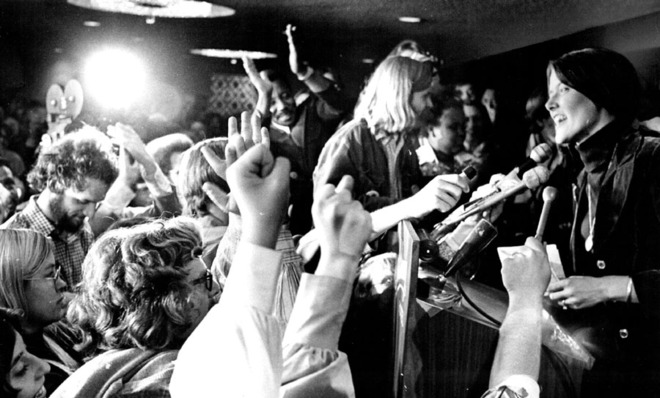This was originally published two years ago, but it remains relevant today. Happy Women’s History Month!
March is Women’s History Month, and if you’re anything like me, you probably treat that announcement with less than overwhelming enthusiasm. BUT, maybe we’re off on that front. Here are some facts you might not know about Women’s History Month.
First, it wasn’t a thing until pretty recently. As in, 1987. Second, after President Carter originally designated a weel in March, 1980 as National Women’s History Week, then Senator Orrin Hatch (didn’t see that one coming, did you?) and Representative Barbara Mikulski formalized that in a 1981 Congressional Resolution. Then the National Women’s History Project petitioned Congress to carve out a whole month for the ladies to get their due, leaving the other 11 months to uninterrupted adulation of the menfolk. They succeeded, as I noted above, in 1987.
Second, as educator and feminist Myra Sadker once commented, “each time a girl opens a book and reads a womanless history, she learns she is worth less.” As an adoring aunt and godmother to four incredible girls, I think about this all the time.
Does Savannah, who has such a passion for animals and a keen scientific mind more generally, know about Temple Grandin – who overcame autism and redefined how we interact with farm animals? Or Hedy Lamarr, who may be known best for being a beautiful movie star but also invented the technology that originally gave us a military advantage in World War II and now serves as the basis for gives us wireless internet and Bluetooth technologies? Does she know that the first computer programmer was a woman named Ada Lovelace?
Does Maddie, who has shown a particular focus on medicine from her earliest moments, know that the first medical writer was a woman named Metradora? That Rita Levi-Montalcini (one of my personal favorites) managed to conduct critical research on cell growth that has paved the way for understandings of things as broad as cancer and dementia – all while hiding from Mussolini during World War II in hidden rooms in her home? That the development of drugs necessary for successful organ transplants and treatments of leukemia and AIDS are attributable to a woman named Gertrude Elion?
Does Clara, who seems to have leadership and advocacy in her blood, know that more than twenty countries currently have a woman serving as head of the national government? That one of Egypt’s most successful pharaohs was a woman named Hatshepsut? The gains that women have made in U.S. politics? (Great video below)

And would they know these things if I or their parents weren’t telling them? What would they be learning about in their classrooms, through traditional media, and on social media? I fear that they would be getting a version of history that suggests the accomplishments of society are predominantly attributable to men. Would they see impressive women as the exception, rather than the norm? When Natalia is old enough to show proclivities and interests, who will she learn about? Will the fields of art, architecture, or business be framed through a myopic lens that relegates women to sidelines and footnotes?
I now think of Women’s History Month as an opportunity to learn, for myself, about all of the role models and heroes I wasn’t taught about when I was younger. I think of it as a time to draw inspiration and strength from all that my predecessors overcame. And I think of it as a good reminder of the responsibility that we all have to be more purposeful about integrating these lessons into our daily lives throughout the year. To help on that year-long effort, consider following Amy Poehler’s Smart Girls and A Mighty Girl through things like Facebook to keep up on key facts, news developments and resources to the same end.










